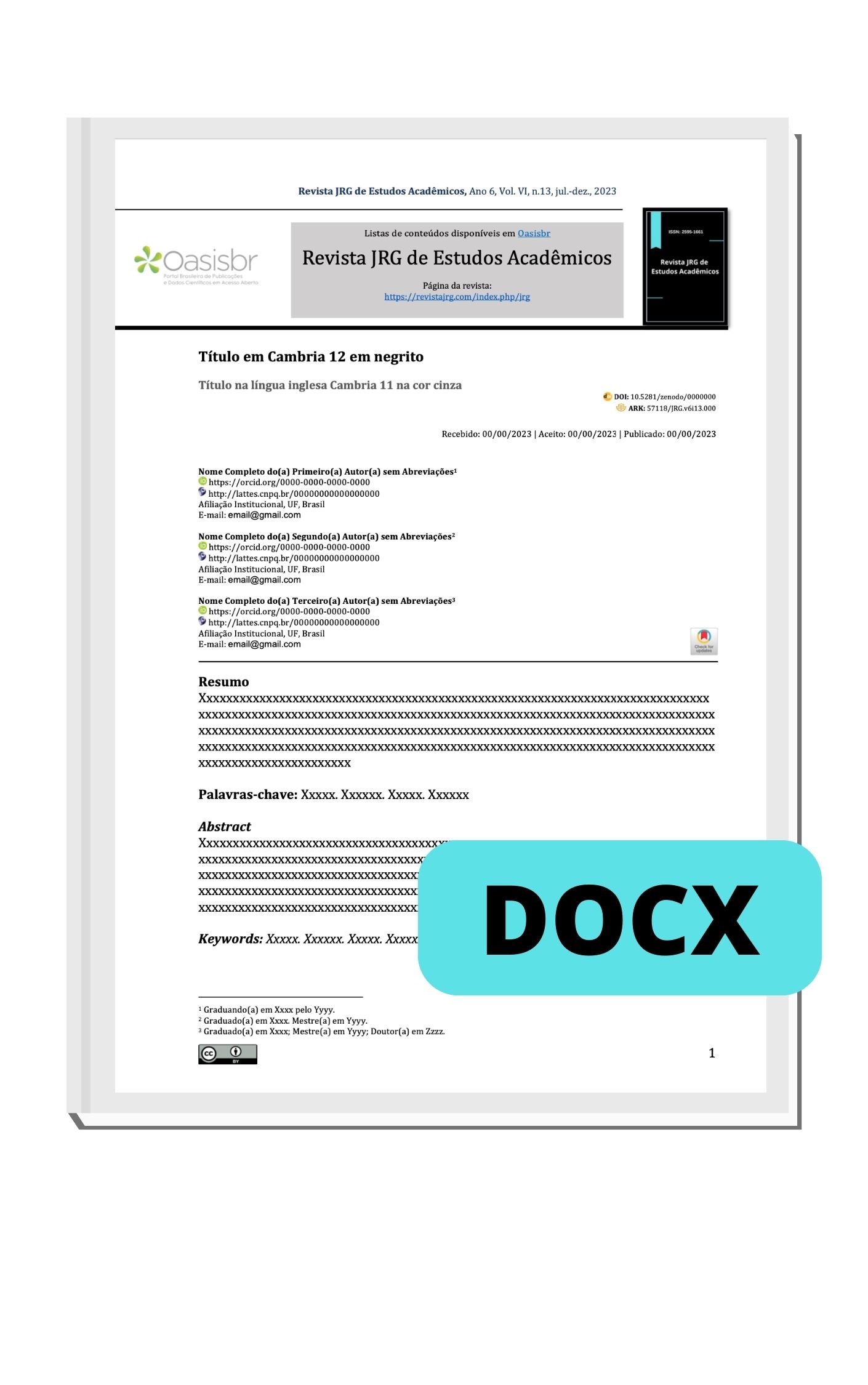A Comparison os postoperative analgesia in knee arthroplasty: a prospective cohort study
DOI:
https://doi.org/10.55892/jrg.v8i19.2569Keywords:
Analgesia, arthroplasty, visual pain scale.Abstract
Background: this research aimed to compare the different analgesia methods used in patients undergoing total knee arthroplasty (TKA), with a special focus on the association of postoperative peripheral blocks. Methods: prospective-quantitative study in elective TKA patients at the hospital, Santa Casa de Misericordia, in Juiz de Fora, MG (N = 100), between March and November 2024. The patients were operated on by the same orthopedic surgeon specializing in knee. The method of anesthesia and analgesia used was freely chosen by the anesthetist scheduled for the surgery in question. Results: (i) the independent variable “sex” presented a Pearson correlation t=32.42; sig. >0.00 for the use of opioids in TKA surgical procedures. (ii) This result was reinforced by the high rate of opioid application in female patients in the postoperative period (86%, M=1.49; SD=0.52). (iii) The anesthetic technique Morphine + ACB presented a probability of 64.20% of application among women, against only 15.20% of iPack + ACB and 2.5% of ACB among men. (iv) 85% of the results obtained through the application of the Visual Pain Scale/Visual Analog Scale for pain (VAS) were concentrated between “mild pain” (36%) and “moderate pain” 49%. Conclusion: The high rate of opioid application in female patients in the postoperative period was related to the low application of iPack+ACB block. The literature is ambivalent on suggesting that iPack reduces mild pain, improve motor functions and reduce opioid consumption, while other studies reached the opposite conclusion.
Downloads
References
AKENSEN, S. et al. Comparison of efficacy between the genicular nerve block and the popliteal artery and the capsule of the posterior knee (iPack) block for total knee replacement surgery: A prospective randomized controlled study. Acta Orthop. Traumatol. Turc., v. 55(2): 134-140, 2021. https://doi.org/10.5152/j.aott.2021.20187.
GOESLING, J. et al. Trends and predictors of opioid use after total knee and total hip arthroplasty. PAIN, v. 157(6): p. 1259-1265, 2016.
HUSSAIN, N. et al. Does the addition of iPack to adductor canal block in the presence or absence of periarticular local anesthetic infiltration improve analgesic and functional outcomes following total knee arthroplasty? A systematic review and meta-analysis. Regional Anesthesia and Pain Medicine, v. 46, n. 8, p. 713–721, ago. 2021.
MOU, P. et al. Adductor Canal Block Combined with iPack Block for Postoperative Analgesia and Function Recovery Following Total Knee Arthroplasty: A Prospective, Double-Blind, Randomized Controlled Study. The Journal of Arthroplasty, 37(2):259-266, 2022. doi: 10.1016/j.arth.2021.10.004.
MYLES, P.S et al. Measuring acute postoperative pain using the visual analog scale: the minimal clinically important difference and patient acceptable symptom state. British Journal of Anesthesia, 118 (3): 424–429 (2017).
SANKINEANI, S. R. et al. Comparison of adductor canal block and iPack block (interspace between the popliteal artery and the capsule of the posterior knee) with adductor canal block alone after total knee arthroplasty: a prospective control trial on pain and knee function in immediate postoperative period. European Journal of Orthopedic Surgery & Traumatology: Orthopedic Traumatology, v. 28, n. 7, p. 1391– 1395, 2018.
TAK, R. et al. Continuous adductor canal block is superior to adductor canal block alone or adductor canal block combined with iPack block (interspace between the popliteal artery and the posterior capsule of knee) in postoperative analgesia and ambulation following total knee arthroplasty: randomized control trial. Musculoskeletal Surgery, 106 (2):155-162. doi: 10.1007/s12306-020-00682-8, 2020.
VICHAINARONG, C. et al. Analgesic efficacy of infiltration between the popliteal artery and capsule of the knee (iPack) block added to local infiltration analgesia and continuous adductor canal block after total knee arthroplasty: a randomized clinical trial. Regional Anesthesia and Pain Medicine, v. 45, n. 11, p. 872–879, 2020.
WANG, J.-H. et al. Does the Addition of iPack Block to Adductor Canal Block Provide Improved Analgesic Effect in Total Knee Arthroplasty? A Systematic Review and Meta-Analise. The Journal of Knee Surgery, 36(04):345-355. DOI: 10.1055/s-0041-1733882., 2023.
ZHENG, F.-Y. et al. The impact of iPack combined with adductor canal block under ultrasound guidance on early motor function after total knee arthroplasty. Brazilian Journal of Anesthesiology, Elsevier, (21)00170–176, 2021.











































